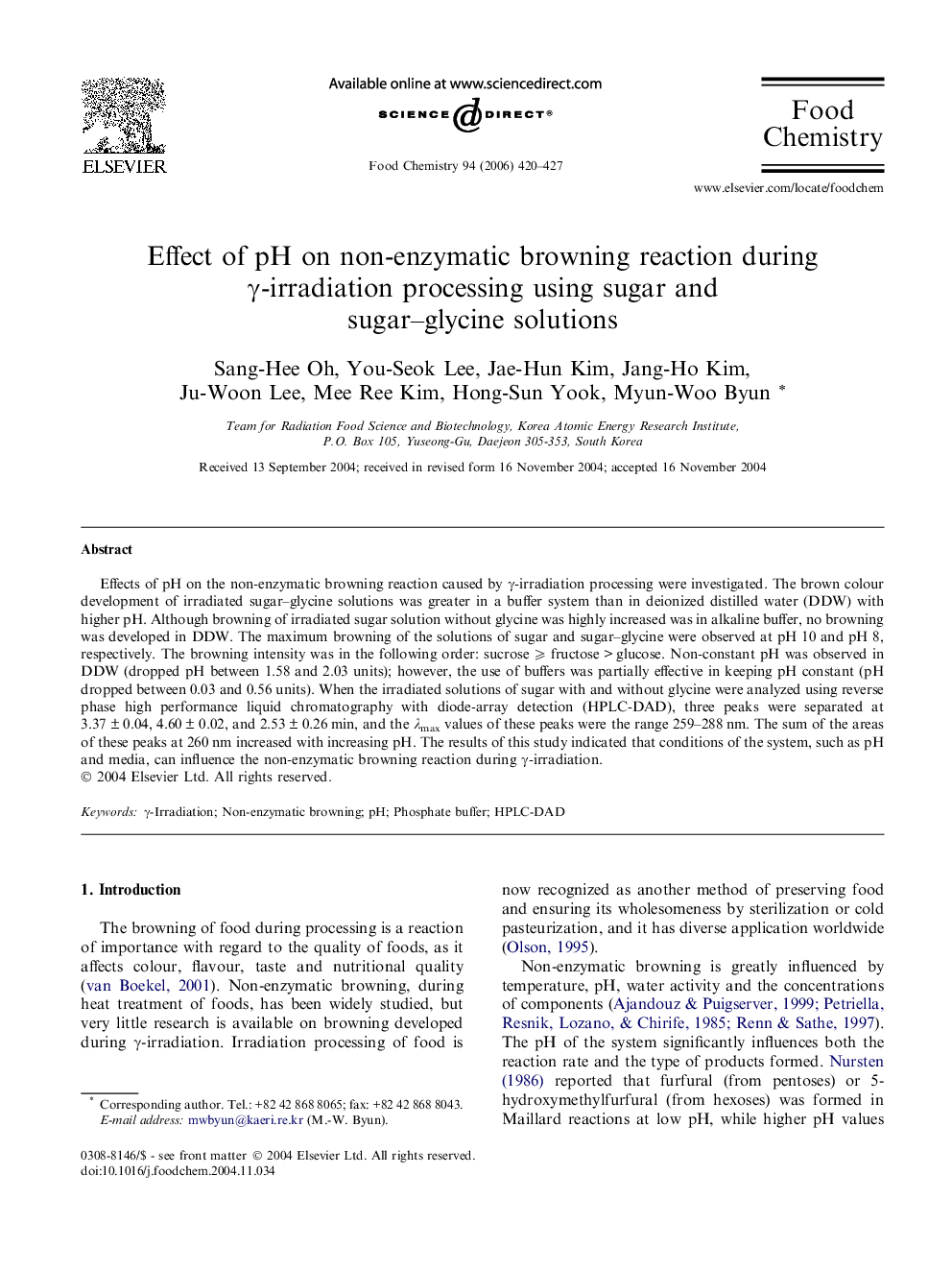| Article ID | Journal | Published Year | Pages | File Type |
|---|---|---|---|---|
| 1192002 | Food Chemistry | 2006 | 8 Pages |
Effects of pH on the non-enzymatic browning reaction caused by γ-irradiation processing were investigated. The brown colour development of irradiated sugar–glycine solutions was greater in a buffer system than in deionized distilled water (DDW) with higher pH. Although browning of irradiated sugar solution without glycine was highly increased was in alkaline buffer, no browning was developed in DDW. The maximum browning of the solutions of sugar and sugar–glycine were observed at pH 10 and pH 8, respectively. The browning intensity was in the following order: sucrose ⩾ fructose > glucose. Non-constant pH was observed in DDW (dropped pH between 1.58 and 2.03 units); however, the use of buffers was partially effective in keeping pH constant (pH dropped between 0.03 and 0.56 units). When the irradiated solutions of sugar with and without glycine were analyzed using reverse phase high performance liquid chromatography with diode-array detection (HPLC-DAD), three peaks were separated at 3.37 ± 0.04, 4.60 ± 0.02, and 2.53 ± 0.26 min, and the λmax values of these peaks were the range 259–288 nm. The sum of the areas of these peaks at 260 nm increased with increasing pH. The results of this study indicated that conditions of the system, such as pH and media, can influence the non-enzymatic browning reaction during γ-irradiation.
